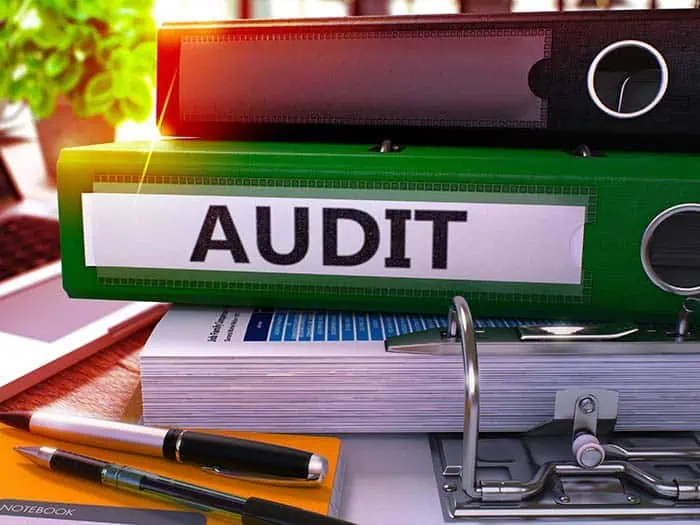


Conducting Phase I Environmental Site Assessments (ESAs) is important to avoid significant financial risks for buyers and lenders. Inexperienced or unqualified consultants might overlook critical issues, making it vital to choose qualified environmental consultants. We recommend interviewing consultants to discuss project needs and assess their expertise to understand how they handle potential challenges.
It is essential to ensure the consultant’s qualifications. This process includes checking their educational background and professional certifications, such as Professional Geologist (PG), Professional Engineer (PE), and Certified Environmental Professional (CEP).
The ASTM International E1527-21 standard, effective in early 2023, is the current industry benchmark for Phase I ESAs. These assessments serve two primary purposes: due diligence — identifying potential contamination in real estate transactions, and liability relief — aiding purchasers in qualifying as bona fide prospective purchasers (BFPPs) to avoid liability for existing contamination.
To gain recognition as a BFPP, compliance with the All-Appropriate Inquiry (AAI) Rule is necessary. A Phase I ESA conforming to the current EPA-approved ASTM standard demonstrates this compliance.
Under Federal Law, the Comprehensive Environmental Response, Compensation, and Liability Act (CERCLA) holds current property owners liable for environmental contamination in all but limited circumstances, even if the contamination occurred before their ownership. In some states, like New Jersey, claiming the Innocent Purchaser Defense requires additional assessment work.
Risks of Inadequate Phase I ESAs
The case of a financial institution versus an environmental consulting company underscores the risks associated with an inadequate environmental site assessment. The financial institution suffered considerable monetary loss due to an incomplete historical review, which failed to detect signs of contamination. Additionally, the property owner lost both the functional value of their property and the right to legal action against the assessment contractor, as they were not designated as “users” in the environmental report, facing potentially millions in cleanup costs.
A report from the USEPA released three months after the property transaction confirmed radioactive contamination on the site, previously utilized for hazardous material processing. Despite historical cleanup efforts, extensive radioactive contamination remained, with records dating back decades. This contamination significantly devalued the property and increased liabilities for the property owner and the financial institution.
For several months, the property owner delayed informing the financial institution about the contamination and related legal action. A new environmental consultant hired by the property owner estimated remediation costs to be between $4 million and $30 million. The property owner defaulted on their loan from the financial institution 33 months after its initiation, with a remaining balance of $3 million. Subsequently, the financial institution obtained a new appraisal for the property, which indicated an “as is” value of zero dollars.
Key Recommendations:
Risks of Using an Inexperienced Consultant
In the T&K Realty case, the environmental consultant performed a Phase I ESA for T&K Realty but failed to identify an underground storage tank despite evidence of a potential tank location. The consultant installed monitoring wells on the property as part of a Phase II ESA. During sewer line construction, workers found and uncovered a tank. They discovered a monitoring well drilled through the tank, releasing its contents. The tank, located next to a garage that serviced motor homes and other vehicles, contained volatile organic compounds like dichlorobenzene, 1,2-dichloroethene, methylene chloride, trichloroethene, benzene, ethylbenzene, naphthalene, toluene, trimethylbenzene, xylenes, solvents, and petroleum constituents. Complicating matters, the consultant used the sewer contractor to try to remove the tank, resulting in the contractor spilling most of the remaining contents on the ground. The release and subsequent spill resulted in groundwater contamination.
T&K Realty had to pay the costs incurred by NYSDEC, the costs to investigate the contamination and remediate the site, and legal costs. These costs amounted to hundreds of thousands of dollars.
Key Recommendations:
Conducting a Phase I ESA has become customary, but one should never underestimate its value. Collaborating with a qualified and competent Environmental Professional (EP) to ensure compliance with ASTM standards and the AAI Rule is essential. Failure to meet these requirements in a Phase I ESA could jeopardize the purchaser’s liability defenses.
Recognized Environmental Conditions – Best Practices
In the case of TC Rich vs. Shah Chemical Corporation (Shah)[1], an interesting situation arose regarding the recognition of a Recognized Environmental Condition (REC) during two separate Phase I ESAs conducted at separate times.
In the initial Phase I ESA TC Rich performed in 2005, they identified only one REC before purchasing the property and concluded that there was no contamination after soil sampling.
However, in 2015, TC Rich conducted another Phase I ESA to secure a loan. This time, the Phase I ESA identified the prior operations of Shah as a REC and initiated a Phase II ESA. The Phase II ESA revealed Tetrachloroethylene (PCE) contamination in soil, soil gas, groundwater, and even indoor air within the property building, consistent with discharges from Shah’s historical operations.
As a result, TC Rich initiated legal action against Shaw to recover toxic cleanup costs for the property, future cleanup costs, past damages, and attorney fees.
Importantly, TC Rich asserted that they neither caused nor contributed to the hazardous substance discharge on the property and had no prior knowledge or reason to believe that the property was contaminated. TC Rich took civil action against Shah for future cleanup costs and neither caused nor contributed to the contamination, leading to a settlement. If necessary, TC Rich could have used the “innocent landowner” defense under CERCLA.
Key Recommendations:
Conducting thorough Phase I Environmental Site Assessments (ESAs) is essential for uncovering and addressing potential environmental contamination and conditions linked to properties. Inadequate ESAs, often resulting from inexperienced consultants, can have significant financial and legal consequences for the owner, borrower, and/or lender. This is exemplified in various cases, including those detailed herein, which involved a major financial institution, an environmental consulting firm, and situations like T&K Realty and TC Rich.
Compliance with the AAI Rule is an important first step to qualify for the Bona Fide Prospective Purchaser defense under CERCLA, thus helping parties avoid financial liability for contamination caused prior to their ownership.
In summary, compliance with ASTM E1527-21 and the AAI Rule is essential for due diligence efforts to ensure legal protections and the performance of a thorough risk assessment to maintain confidence in real estate transactions, especially in urban and industrial areas with an environmental history.
References:
We have seen the Safety First signs in various businesses, but which comes first, health & safety or profit? Some say, without profit, a business would be out of business, and safety would no longer be a concern. However, SCS Engineers thinks safety is first in this chicken and egg paradox. After all, we are discussing peoples’ well-being, but let’s address the business aspects too.
To increase your profit and reduce your operating costs, you need to focus on your employees’ health and safety, not only trip hazards and other short-term problems. The long-term health of employees is a vital component of health & safety – protecting your people from toxic chemical vapors, having a hearing conservation program in a noisy environment, and don’t forget ergonomics in industrial and office settings.
Safety and health are both essential; they only appear to slow down productivity. In the event of an illness or incident, production could slow or stop while resolving an issue and carrying out investigations. Minimize costly production interruptions by changing your health & safety focus to a proactive preventative approach. Instead of reducing accident impacts, prevent them in the first place.
You can implement a better health & safety program and stave off the inevitable risks to personnel and business assets across factories, construction sites, and other work environments by better managing and preventing an incident from occurring in the first place. Being proactive becomes an integral part of the safety equation by achieving efficiency and value, leaving behind the ever-present focus on cost.
Taking a preventative approach instead of a reactive one, every business, employee, visitor, and stakeholder benefits. There will no longer be a question of balancing safety and efficiency. Instead, safety is a catalyst for quicker production, superior logistics, easier movement of goods and people, and an overall better working environment.
In January of 2022, two business owners were sentenced to prison for violating Worker Safety Laws, resulting in two workers’ deaths when a rail tanker car exploded. Imagine the blow to employee morale when this incident occurred. Morale is also affected by issues not nearly as dramatic, such as when an employee develops cancer from inhaling chemical vapors over the course of their career or if a co-worker needs back surgery due to incorrect lifting techniques. When OSHA or the lawyers come knocking and asking for training records and personal exposure data, what will you have to show them?
A thoughtful, proactive written health & safety program, regular training, thorough written documentation, and meticulous collection of personal exposure data show agencies and your staff that your employees are knowledgeable about health & safety. They are not exposed to stressors at levels that exceed harmful or regulatory limits. Implementing engineering or administrative controls can also reduce excessive exposure below the legal limits and recommended guidelines. Something very important to potential new hires.
About the Author:
Jed Douglas, CIH, CSP, PG is SCS Engineers’ National Expert on Industrial Hygiene, and a senior technical advisor specializing in Occupational Health and Safety issues. He has 30 years of experience as a health and safety specialist and project manager, and has managed numerous environmental projects involving: safety; soil and groundwater investigations and remediation of hazardous constituents; and, indoor air quality (IAQ) assessments for physical, chemical, and biological contaminants. Read more from this IH&S expert who shares his knowledge abd insights here:

We recommend their new book, Hold It! The Case for Hard Thinking, Honesty and Humility when Assessing Environmental Health Risks. It’s the #1 new release in Amazon’s Pollution Engineering category. Both authors take an objective look at some of today’s and yesterday’s most controversial environmental topics.
You can read a review here and buy the book on Amazon.
SCS Engineers has built an impressive history, set of accomplishments and qualifications in designing, building and operating Renewable Natural Gas (RNG) facilities. SCS creates the RNG by removing almost all other gas constituents except the methane. These other constituents include carbon dioxide, hydrogen sulfide (H2S), sulfur compounds, and volatile organic compounds (VOCs), siloxanes, oxygen, nitrogen, and waste.
Leaders such as Jeff Pierce of SCS Engineers employ decades of energy systems expertise to analyze and evaluate the effects of variations in processes and the parameters important to successful facilities. They model and evaluate complex systems and processes to evaluate plant performance. They account for project objectives and requirements while considering technical, business, energy, and environmental objectives.
Biogas recovery systems are feasible for landfills, large dairy, hog, poultry, and beef operations. In short, using science and facts to make sustainable decisions has a much greater impact on addressing climate change.